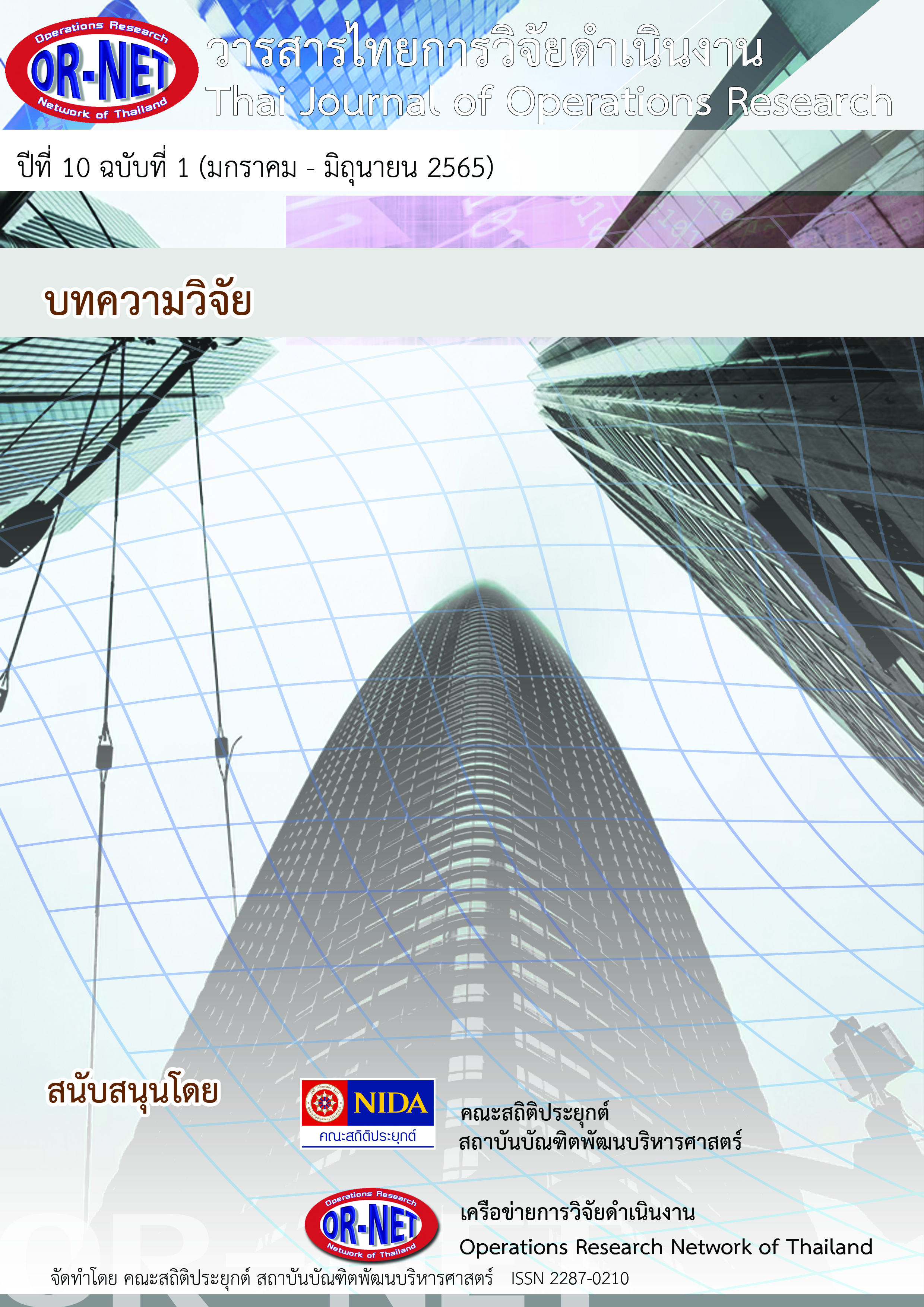Inventory Models from Medicine Demand Forecasting with Dummy Variables and Interaction Terms of Multiple Regression
Keywords:
Multiple Regression, Inventory Model, Medicine ForecastingAbstract
The objective of this study is to forecast the demand for both generic and original medicines and to construct their inventory policies at a hospital using these forecasts. To construct an inventory policy, both uncertainties in demand and lead time are accounted for. We consider three inventory models: Models 1 and 2 assume normal distribution, but different calculations are used to compute the order-up-to level and the reorder point. Model 3 does not assume normal distribution but uses the empirical distribution of the lead time and fits distribution to the demand using the R Studio program. In our multiple regression model for the generic medicines, our independent variables include both numerical variables, such as price, and categorical variables, such as group of doctors, section in hospital, classification of medicine and vendor of medicine. After applying the proposed inventory policy to the six-month actual data, we find that the cycle service level (CSL) exceeds 99% for 8 out of 10 generic medicines, and the inventory cost is reduced by 60%, compared to the cost given the current policy. Furthermore, we quantify the effect of these new generic medicines to the original medicines and obtain the appropriate forecasts and the corresponding inventory policies for the affected original medicines. In addition to the proposed regression models, time series forecasting models can be used for original medicines, whose historical data are available. In this case study, we use the innovations state space model for exponential smoothing (ETS), the autoregressive integrated moving average (ARIMA) and the neural network autoregression (NNAR) models. Our result reveals that the CSL exceeds 99% for 9 out of 10 original medicines, and the inventory cost is reduced by 47%, compared to the cost given the current policy.
References
J.E. Hanke and D.W. Wichern, “Multiple Regression Analysis,” in Business Forecasting, 8th ed. New Jersey, Pearson Education, Inc, 2005.
R.J. Hyndman, and G. Athanasopoukos. (2021, March 1). OText [Online]. Available: http: //otexts.com/fpp2
M.A. Waller and T.L. Esper, “Types of Inventory.” The Definitive Guide to Inventory Management: Principles and Strategies for the Efficient Flow of Inventory across the Supply Chain. Council of Supply Chain Management Professionals (CSCMP), Upper Saddle River, 2014, pp. 9-21.
อนุพงษ์ พึ่งศักดิ์, “ความถูกต้องและประสิทธิผลของการพยากรณ์อุปสงค์สำหรับการบริหารคลังยา,” เภสัชศาสตร์มหาบัณฑิต, สาขาวิชาการจัดการทางเภสัชกรรม, มหาวิทยาลัยศิลกากร, นครปฐม, 2558.
พนิดา ยืนยงสวัสดิ์ และพยุง มีสัจ, “การพยากรณ์ปริมาณการใช้ยาในโรงพยาบาลโดยใช้โครงข่ายประสาทเทียม,” วารสารเทนโนโลยีสารสนเทศ., ปีที่ 2, ฉบับที่ 3, น. 19-27, 2549.
จันทร์เพ็ญ อนุรัตนานนท์, ประจวบ กล่อมจิตร, พัทธ์ธีรา พรมทอง และรจเรข เลขกูล, “การจัดตารางการสั่งซื้อยาในโรงพยาบาลรัฐ กรณีศึกษาโรงพยาบาลสิรินธร,” วารสารข่ายงานวิศวกรรมอุตสาหรรมไทย, ปีที่ 6, ฉบับที่ 2, น. 8-19, 2563.
ลดารวี คุณอมรเลิศ, “การพัฒนาต้นแบบการจัดการคลังยาที่เหมาะสมสำหรับระดับการให้บริการของโรงพยาบาล,” วิศวกรรมศาสตร์มหาบัณฑิต, สาขาวิชาวิศวกรรมอุตสาหการ, มหาวิทยาลัยเทคโนโลยีสุรนารี, นครราชสีมา, 2562.
Downloads
Published
How to Cite
Issue
Section
License

This work is licensed under a Creative Commons Attribution-NonCommercial-NoDerivatives 4.0 International License.




